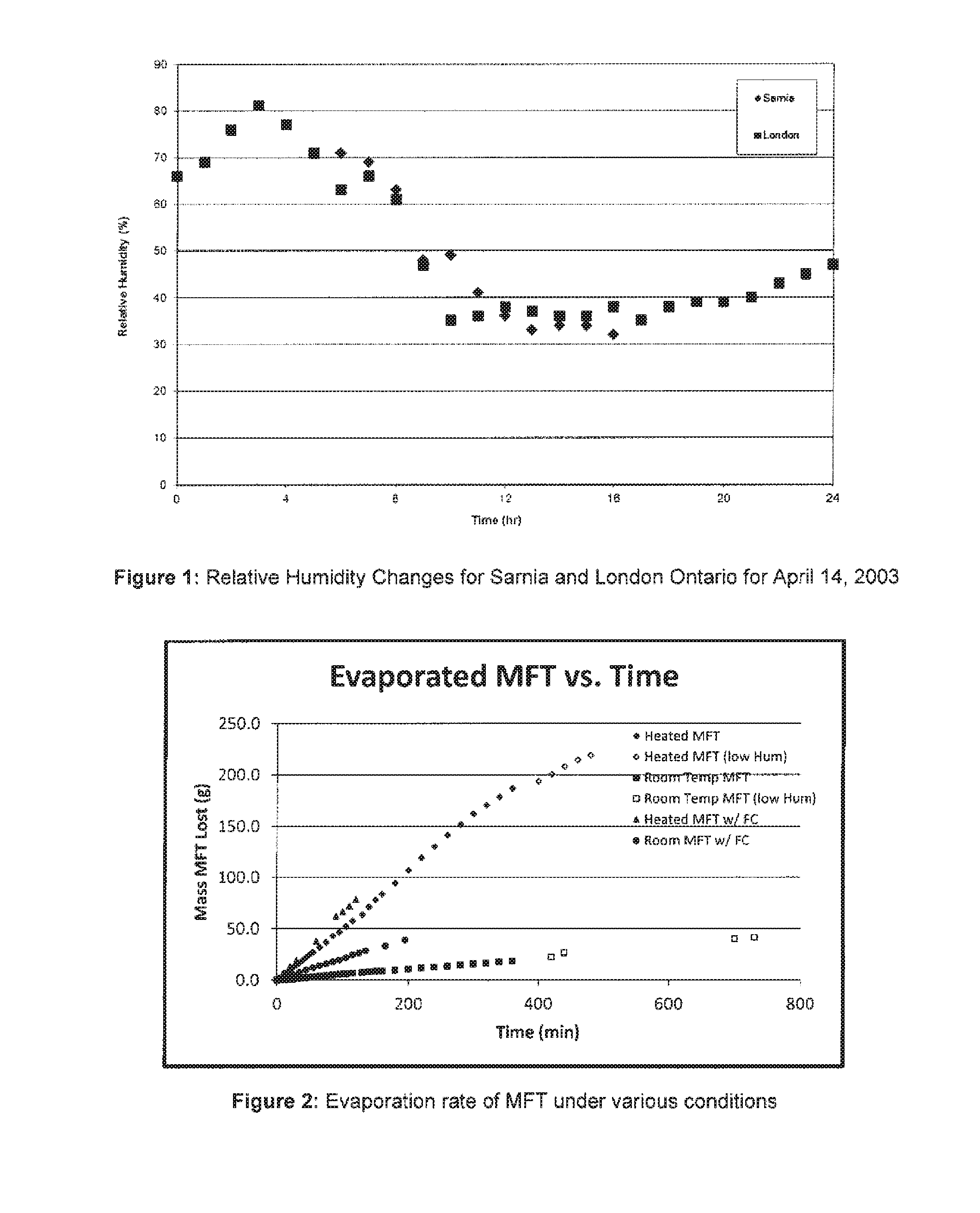Waste pond volume management
a waste pond and volume technology, applied in the direction of sustainable biological treatment, quary waste water treatment, separation process, etc., can solve the problem of significant lower operating cost, achieve the effect of improving evaporation rate, promoting and/or controlling evaporation of waste/brine ponds, and improving evaporation ra
- Summary
- Abstract
- Description
- Claims
- Application Information
AI Technical Summary
Benefits of technology
Problems solved by technology
Method used
Image
Examples
example 1
[0054]Preliminary laboratory tests involving the drying of mature fine tailings (MFT) were conducted to assess the effect of forced convection (FC) versus heating on the drying rate of MFT. To evaluate the effect of forced convection, a jet of bone dry air was blown over MFT samples and the jet or ‘wind’ speed was measured using an anemometer. To assess the effect of heating MFT samples were placed on a hot plate with a temperature controller. All tests were conducted in a fume hood, the sash of which was kept at a constant height to ensure constant fume hood draft across all tests. The humidity within the fume hood fluctuated over the duration of the test program ranged from 40-62%. The samples of MFT, generated from a bitumen (oil sand) extraction process, were all held in round tinplate containers (6.2 inch / 158 mm diam, 0.6 inch / 15 mm height).
[0055]Tests were completed at the following conditions:[0056]1. Heated MFT (˜48° C.) with no forced convection (fume hood dr...
example 2
Brine Evaporation
[0061]The evaporation behavior of brine and pure water were compared under static conditions and under conditions with a moderate flow of air across the surface of the liquids (1.4 m / sec). In both cases, the rate of evaporation under flowing air conditions exceeded that of the static case by greater than three times. FIG. 3 shows the effect of static versus flowing air conditions and clearly shows the increase in evaporation rate with air flow. Under the relatively mild flow conditions considered in this example, the evaporation rate increase demonstrates the beneficial effect of increasing air flow across the surface of the brine, which would be an effective method to reduce water content and increase brine concentration.
PUM
| Property | Measurement | Unit |
|---|---|---|
| humidity | aaaaa | aaaaa |
| volume | aaaaa | aaaaa |
| temperature distribution | aaaaa | aaaaa |
Abstract
Description
Claims
Application Information
 Login to View More
Login to View More - R&D
- Intellectual Property
- Life Sciences
- Materials
- Tech Scout
- Unparalleled Data Quality
- Higher Quality Content
- 60% Fewer Hallucinations
Browse by: Latest US Patents, China's latest patents, Technical Efficacy Thesaurus, Application Domain, Technology Topic, Popular Technical Reports.
© 2025 PatSnap. All rights reserved.Legal|Privacy policy|Modern Slavery Act Transparency Statement|Sitemap|About US| Contact US: help@patsnap.com


